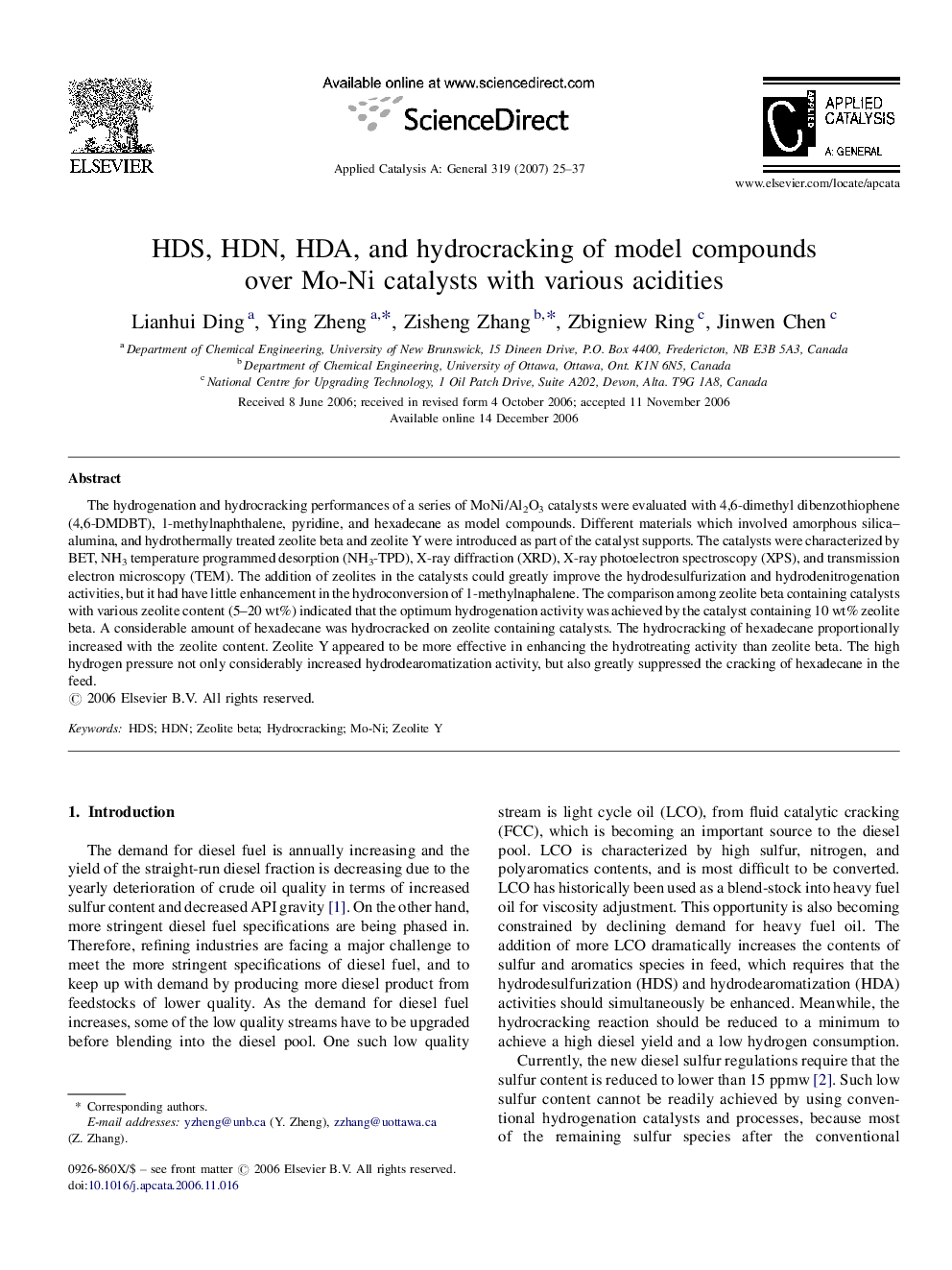| Article ID | Journal | Published Year | Pages | File Type |
|---|---|---|---|---|
| 43971 | Applied Catalysis A: General | 2007 | 13 Pages |
The hydrogenation and hydrocracking performances of a series of MoNi/Al2O3 catalysts were evaluated with 4,6-dimethyl dibenzothiophene (4,6-DMDBT), 1-methylnaphthalene, pyridine, and hexadecane as model compounds. Different materials which involved amorphous silica–alumina, and hydrothermally treated zeolite beta and zeolite Y were introduced as part of the catalyst supports. The catalysts were characterized by BET, NH3 temperature programmed desorption (NH3-TPD), X-ray diffraction (XRD), X-ray photoelectron spectroscopy (XPS), and transmission electron microscopy (TEM). The addition of zeolites in the catalysts could greatly improve the hydrodesulfurization and hydrodenitrogenation activities, but it had have little enhancement in the hydroconversion of 1-methylnaphalene. The comparison among zeolite beta containing catalysts with various zeolite content (5–20 wt%) indicated that the optimum hydrogenation activity was achieved by the catalyst containing 10 wt% zeolite beta. A considerable amount of hexadecane was hydrocracked on zeolite containing catalysts. The hydrocracking of hexadecane proportionally increased with the zeolite content. Zeolite Y appeared to be more effective in enhancing the hydrotreating activity than zeolite beta. The high hydrogen pressure not only considerably increased hydrodearomatization activity, but also greatly suppressed the cracking of hexadecane in the feed.
Graphical abstractThe hydrogenation and hydrocracking performances of a series of MoNi/Al2O3 catalysts were studied. The addition of zeolites to the catalysts can greatly improve the hydrodesulfurization and hydrodenitrogenation activities, while the hydrocracking of hexadecane also increased proportionally with the zeolite content. The performance of the catalysts is closely associated with the morphology of sulfided catalysts. The figure shows the distribution of the length of MoS2 slabs for the four sulfided catalysts. Figure optionsDownload full-size imageDownload as PowerPoint slide
